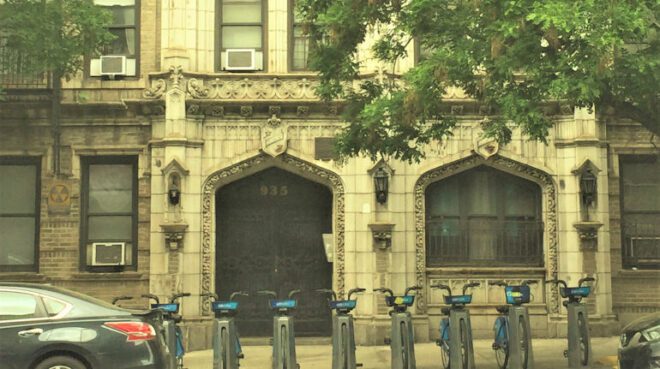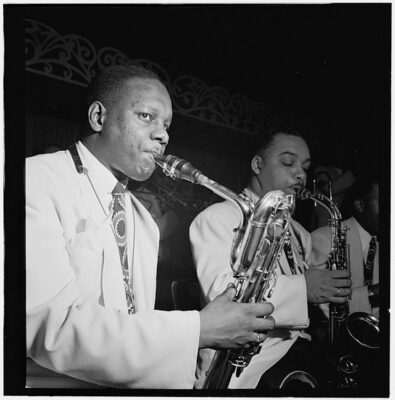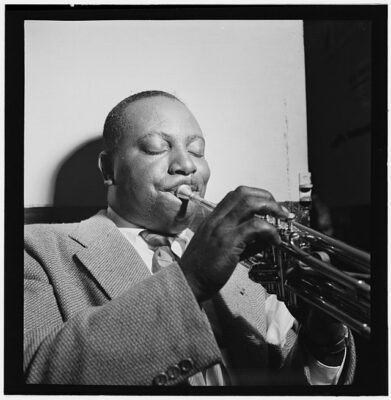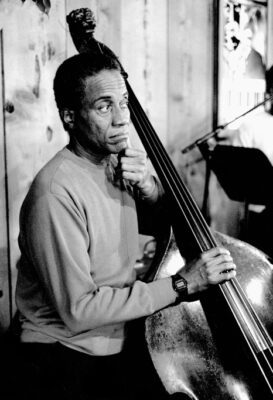Delighted to be able to post this entry I had archived last year, following the delay to the première of Sugar Hill - The Ellington Staryhorn Nutcracker.
The production, concept and libretto by Jessica Swan, will be taking place in Pittsburgh, Chicago and New York City from Autumn 2023. More details as we receive them...
From The Pittsburgh Courier...
BILLY STRAYHORN, THE ICONIC JAZZ COMPOSER. HIS WORK, ALONG WITH DUKE ELLINGTON, WILL FILL THE AIR DURING “SUGAR HILL—THE ELLINGTON/STRAYHORN NUTCRACKER,” AT THE BENEDUM CENTER, OCT. 19-30.
COURIER EXCLUSIVE
by Rob Taylor Jr., Courier Staff Writer
Move over, New York City.
The New Pittsburgh Courier has learned exclusively that the world premiere of Sugar Hill—The Ellington/Strayhorn Nutcracker, will debut in Pittsburgh, at the Benedum Center, from Oct. 19-30. It’s a jazz-steeped reimagining of The Nutcracker based on the genre-defying collaboration of the legendary Duke Ellington and Pittsburgh’s favorite son, Billy Strayhorn. Sugar Hill is set to the timeless music of Ellington and Strayhorn and features a libretto by Jessica Swan. Sugar Hill will then play in New York City at the New York City Center from Nov. 15-27. The performance is directed by Joshua Bergasse and produced by David Garfinkle.
“Premiering it in Pittsburgh is very, very important,” said A. Alyce Claerbaut, a niece of Strayhorn, in an exclusive print media interview with the Courier, July 17. “(Strayhorn) and Duke partnered in 1960 to do this work (jazz album The Nutcracker Suite) and it has remained a holiday favorite. If you look every year, some orchestra’s doing it, so it’s quite an honor to have it fully developed (the performance at the Benedum) in a jazzy way.”Claerbaut is an executive producer of Sugar Hill, but she’s also president of Billy Strayhorn Songs, Inc., formed a few decades ago to make Strayhorn’s music available to the public and to capture, manage, preserve, and expand the artist’s legacy.
Strayhorn was born in Dayton, Ohio, in 1915, but his family soon moved to Pittsburgh. He attended Westinghouse High School and, according to a biography from the American Ballet Theatre, attended the Pittsburgh Musical Institute for piano lessons and classical music study. In 1938, at just 23 years old, Strayhorn met Ellington and had an impromptu audition for the famed jazz aficionado at Pittsburgh’s Stanley Theatre. Ellington was so impressed by Strayhorn’s abilities that Ellington moved Strayhorn with him to New York City, and Strayhorn began writing musical arrangements for Ellington and his band. This relationship lasted more than 25 years, which included the famous jazz album, The Nutcracker Suite, in 1960, for Columbia Records.Strayhorn died on May 31, 1967, in New York City due to complications from cancer. He was 51.
 “He was a very gentle man, and he was a man who had such respect for everybody,” Claerbaut told the Courier about her uncle, Strayhorn. “I knew him personally. He was a very kind person. He cared about people…He had a powerful presence in the world. He was with Martin Luther King (Jr.). He helped launch the March on Washington. He worked with Jackie Robinson to raise money for civil rights. He was in Chicago to do Duke Ellington’s My People (stage play) commemoration of the 100 years of progress after the Emancipation Proclamation. He was supportive in Harlem of the Copasetics (tap dance group). A lot of people don’t know about these activities. He was really an activist and he used his music to do that.”
“He was a very gentle man, and he was a man who had such respect for everybody,” Claerbaut told the Courier about her uncle, Strayhorn. “I knew him personally. He was a very kind person. He cared about people…He had a powerful presence in the world. He was with Martin Luther King (Jr.). He helped launch the March on Washington. He worked with Jackie Robinson to raise money for civil rights. He was in Chicago to do Duke Ellington’s My People (stage play) commemoration of the 100 years of progress after the Emancipation Proclamation. He was supportive in Harlem of the Copasetics (tap dance group). A lot of people don’t know about these activities. He was really an activist and he used his music to do that.”
And what about the time in high school that Claerbaut introduced her uncle to the school’s jazz band group? “We went into the auditorium and my music teacher was there,” Claerbaut said. “I said, ‘My uncle is here to hear the jazz band,’ and she said, ‘OK,’ and I said, ‘This is my Uncle Billy Strayhorn…’ and she almost fell off the stage.”
Claerbaut said then, “all the kids who knew jazz were surrounding him like they were his bodyguards. He was just amused, he loved talking to young people. He was so good with them. That is a real fond memory I have of him.”
Claerbaut said she’s noticed how younger people are becoming more and more interested in Strayhorn’s music and his life. A nephew of Strayhorn, Galen Demus, started the Billy Strayhorn Jazz Education Scholarship in 2008, which promotes the art of jazz to students in high school and college.
“So many people are coming to jazz because jazz is now in the schools and they’re being educated in it,” said Claerbaut, who was named a “Chicagoan of the Year” in 2011 for her continuous work in jazz circles in Chicago and beyond.
Claerbaut then pointed to the continued acceptance of those in the LGBTQ community as a reason for the interest in Strayhorn, who was gay.
And pop superstar Lady Gaga, a few years ago, championed Strayhorn by singing Lush Life, one of Strayhorn’s most popular songs, along with Take the ‘A’ Train.
“When that happened (Lady Gaga), there were a bunch of young people who heard of him (Strayhorn) for the first time,” Claerbaut told the Courier.
Strayhorn had “a tremendous sense of humor,” Claerbaut added. “You could ask him any question about music. He was always encouraging us.”




















